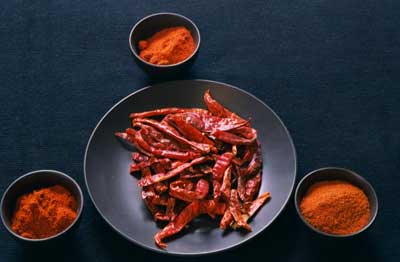"Peppered." A pecorino from Sicily with black peppercorns distributed throughout the paste. I asked Google for a translation of a piece I found on the web to see if I could improve the information I have about this cheese. This was the result: "According maturing may be table and grating. To be enjoyed with red wines like the lively Monica is also perfect with the bride." I leave you to work out what this means!

Cayenne pepper. Ground, hot red chillis. They are tapered and contain twice as much capsaicin as red peppers, which is why they provide so much heat to food. Chillis are often available in dried or powdered forms. Colour is not necessarily a guide to the heat, which is measured in Scoville units (named after Wilbur Scoville). Generally speaking the scale goes from small and pointed, with thin skins, having the most heat through to large and blunt having the least. The greatest heat is contained in the membranes and seeds.

Cayenne pepper. Ground, hot red chillis. They are tapered and contain twice as much capsaicin as red peppers, which is why they provide so much heat to food. Chillis are often available in dried or powdered forms. Colour is not necessarily a guide to the heat, which is measured in Scoville units (named after Wilbur Scoville). Generally speaking the scale goes from small and pointed, with thin skins, having the most heat through to large and blunt having the least. The greatest heat is contained in the membranes and seeds.